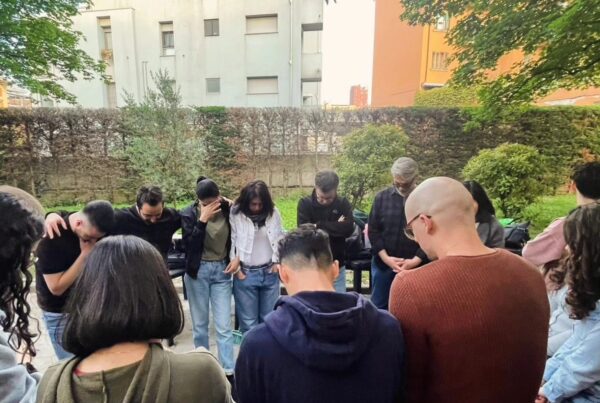“We’ve replanted once, and we’ve revitalized ten times.” This statement always baffles people, yet it’s the answer to a question people often ask regarding what God has done at Cornerstone Church in Liverpool, England. “Aren’t they the same thing?” is always their response.
People are intrigued by our story. How did God intervene in a small, struggling church in the back streets of inner-city Liverpool that was trying to avoid a seemingly inevitable demise while simultaneously avoiding the need for change? How is it that this church is now filled with the redeemed from all generations and backgrounds? How is it that those once-struggling old saints who prayed that their church might survive are now praying for the teams of people they’re sending out to plant more churches?
Having had the privilege of leading a church replant that, by God’s grace, has exited the hospital on its feet rather than via the mortuary, there are two convictions I’d like to share with you. The first is that church revitalization and church replanting are two different things. The second is that the former is vital to the life of every church.
Replanting vs. Revitalization
I would describe a church replant as a church effectively starting again—a complete overhaul where new and existing church members come to one mind, change direction, and decide to move forward. This may result in a change of name, a new pastor, new rhythms, a careful reconsideration of ministry philosophy, and in some cases, a shift in theology. A church replant involves all parties assessing and working through all matters of church life for the cause of the gospel. It happens when a church is desperate and has tried every option to get things going again. For many churches, it’s the last option before closure.
How is it that those once-struggling old saints who prayed that their church might survive are now praying for the teams of people they’re sending out to plant more churches?
For us at Cornerstone, church revitalization is a process we’ve worked through regularly. As church leaders, we realize there are areas and seasons in church life when we can become stale, comfortable, and complacent. It can happen during times of obvious difficulty when pastoral issues, financial problems, and more strains the church or its leadership. But it can also occur when churches are living through periods of apparent “success.”
Declining and Dying Churches
I’m reminded of the churches in chapters two and three in the book of Revelation. Despite their reputations for theological soundness and spiritual vibrancy, there were things either present or missing within the life of the church damaging their gospel witness. When I read through these letters, I see Jesus lovingly pursuing, challenging, and warning his church. Rather than just letting it die, he warns of the consequences of losing the essence of the gospel.
The death of a church is often the result of a slow decline. Many elements can mask the downward trajectory on which a church is heading, including the ministry itself, the church’s reputation, or the congregation’s age and size. Coupled with a fear of conflict over important issues and a desire for comfort, these elements can be deadly. According to Jesus (Rev. 2:5), this path ends with the removal of the lampstand and the church being wheeled into the mortuary.
Renewed and Revitalized Churches
Revitalization isn’t something that should only be considered at the end of the road. What goes through my mind when talking with leaders of struggling churches is that it could have been avoided if we, as a church collectively, would listen and respond to the call of Jesus. He is constantly leading us to consider issues of revitalization within our lives and churches.
Revitalization isn’t something that should only be considered at the end of the road. Whatever the size, age, or income of your church, make revitalization a healthy part of your church’s rhythms.
It is my conviction that this is what Jesus wants from his churches. Revitalization is what he called the churches to in Revelation, and it’s what he’s calling us to today. Revitalization is churches and their leaders constantly asking: Are we on the road to life as Jesus describes it?
Soon after replanting Cornerstone Church, we revitalized because once the honeymoon period of the new faces, new pastor, and new name wore off, we found ourselves back on the wrong trajectory. But this time, the call, the warning, and the loving pursuit of Jesus were loud and clear. So, we revitalized. We got back to our convictions that had become so assumed that many in our church didn’t know them. We reassessed the culture being formed and readdressed that culture in light of our convictions. We then changed our constructs to ensure that our church’s structure was being shaped by the vine of conviction and gospel culture, not the trellis of ministry constructs.
I’m thankful that Jesus raises the dead. He raises us individually, and he’s raising dead churches to life that are flourishing and planting new churches worldwide. I’m also thankful that he’s constantly pursuing and calling us to understand the type of church he’s building—a church that showcases the Father’s glory, through the Son, by the Spirit, and to the world.
Whatever the size, age, or income of your church, make revitalization a healthy part of your church’s rhythms. Revitalization isn’t just a thing other churches do—it’s something we all should do. Don’t read the letters to the churches in Revelation and apply them to the church down the road. Listen to Jesus as he leads, and apply his warnings to your church.










